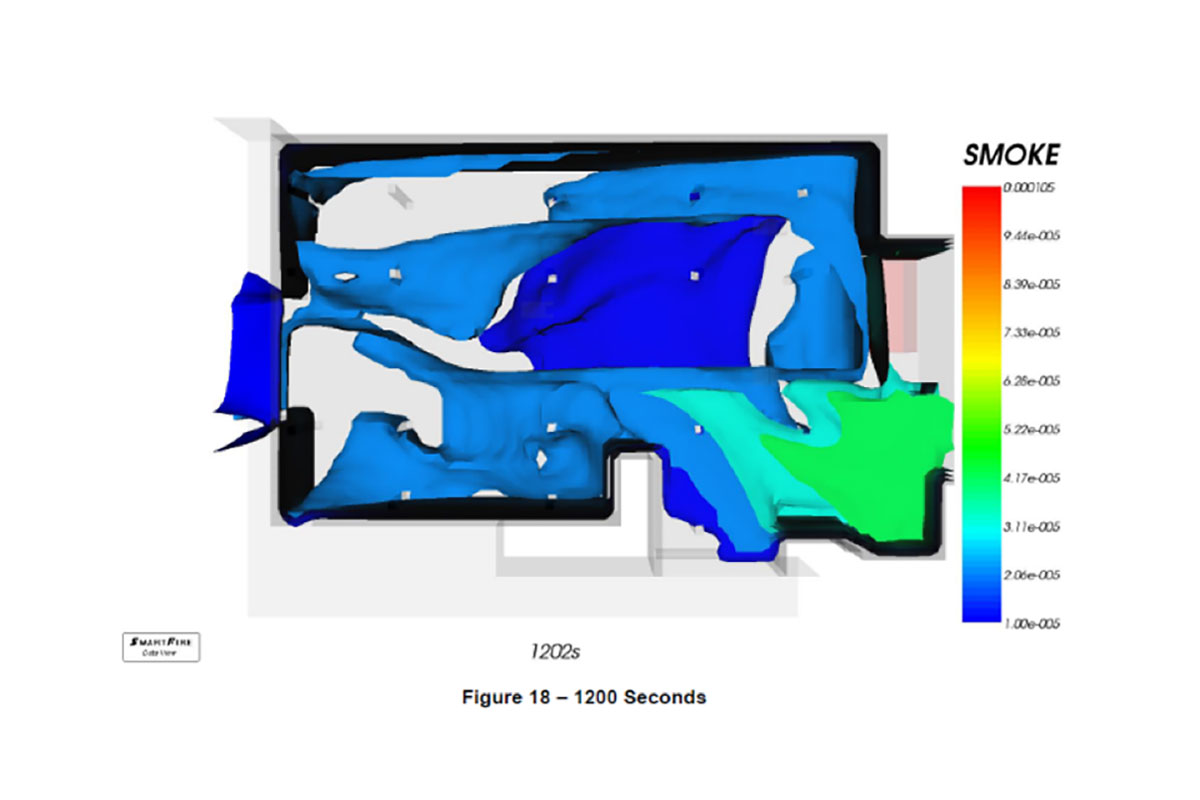In this Q&A, Steven Morgan, our Associate Director, explains the valuable role Computational Fluid Dynamics Modelling, also known as CFD Modelling, plays in fire safety and what it means for the industry.
Computational Fluid Dynamics Modelling Q&A
What is Computational Fluid Dynamics Modelling?
Computational Fluid Dynamics (CFD) modelling uses computer analysis to show how fluid or air moves over a surface or within a space and is used in many industries, such as aerospace and automotive design.
How does FDS Consult UK use it?
In fire engineering terms, the Computational Fluid Dynamics Modelling software maps the spread of fire and smoke through a detailed virtual representation of the building in question. This can be created from building plans, allowing design decisions to be made at an early stage of the project.
How does CFD Modelling help you to plan fire safety in buildings?
It is possible to simulate the fluid dynamics (movement) of the smoke and fire over a set time period, allowing its physical behaviours, for example – smoke rising, to be observed as it unfolds. It shows us how the proposed layout and features of the building will affect the spread of the smoke, enabling us to create an informed fire safety strategy and demonstrate how it will work in practice. The computer model also highlights any areas of concern, such as where smoke is hotter or denser or where fire may spread more quickly.
What is CFD Modelling’s role within the design process?
During the planning stages, the model is used to pinpoint areas that are susceptible to the build-up of smoke. This, in turn, tells our designers and fire engineers where to allocate the necessary safety systems such as smoke ventilation, pressurisation systems and sprinklers.
Once the safety systems have been incorporated into the virtual model, the simulation is rerun to show how effective the various fire safety systems will be in their designated positions. This allows for any areas of development or improvement to be spotted and implemented.
Why is it important to consider fire safety during the early stages of a project?
Creating a bespoke fire strategy at the beginning of each building project ensures that the safety requirements can be met. Making changes during the design phase in response to the results of the analysis is far less costly than making adjustments once the build progresses.
Furthermore, Computational Fluid Dynamics Modelling actually encourages greater design freedom for architects whilst also providing more saleable space. The superior level of accuracy and detail that CFD Modelling provides allows smoke ventilation and fire suppression systems to be optimised. This means there is often scope to expand room sizes and corridor lengths beyond what is suggested in the fire regulations by demonstrating that the safety of occupants is maintained.
In your opinion, to what extent can the use of computer software enhance the industry’s future in fire design?
The use of computer software has made way for a more creative, thorough and tailored approach to fire design. This is further supported by the introduction of additional software such as Evacuation Modelling, Time Equivalence Modelling and Finite-Time Analysis – systems that help us prove our evacuation strategies work as they should, as well as provide the necessary evidence of the efficiency of fire safety measures.
To ensure your project meets fire safety standards, call FDS Consult UK on +44 (0) 1322 387411 or email [email protected].

